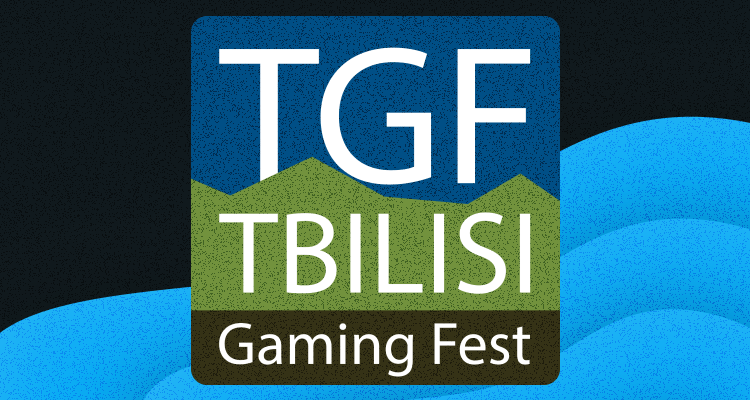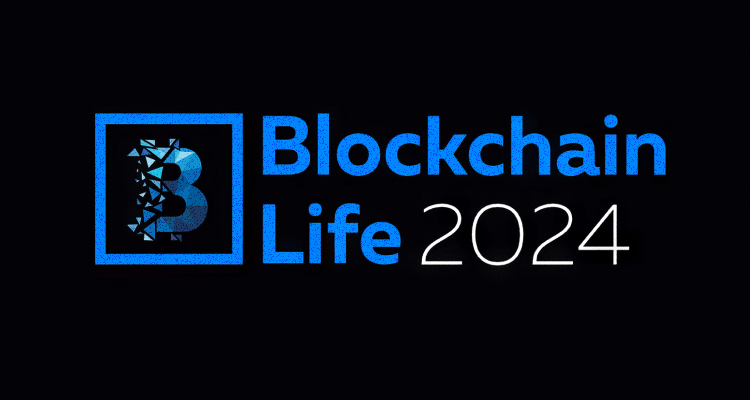"A brand is no longer what we tell the consumer it is—it is what consumers tell each other it is." – Scott Cook.
Branding plays a significant role in crypto marketing. Studies tell us that when companies work hard to make a strong brand, people trust them more. In the United States, 46% of consumers are ready to pay extra for things from a brand they believe in.
To make people recognize your brand in the crypto world, you need to promote it well. Brands can appear in various forms like businesses, culture-related stuff, products, services, events, and even in specific places on the map.
Why Do We Promote Brands?
Brand promotion is like a spotlight in the big world of marketing and branding. Its main goal is to boost sales by attracting more people to buy things. We use advertisements to help people understand what a brand is all about and encourage them to want what the brand offers.
This big goal has many smaller goals inside it. Think about it like a bunch of stepping stones:
- We try to create more demand for the things a brand sells
- We want the brand to be seen as essential and well-liked in the market
- The иrand wants to get bigger and have more customers than its competitors
- Make sure people easily recognize the brand and know what it stands for
- Getting people who haven't tried the brand before to try it
- Keeping the Brand's reputation and identity strong over time
- Making the people who work with the brand feel motivated and proud of their work
- Making friends with others in the market, like suppliers and authorities
- Make sure people don't forget about the brand
- Making people really like the brand and want to stick with it.
Varieties of Brand Promotion

"Positioning is finding the right parking space inside the consumer's mind and going for it before someone else takes it." - Laura Busche.
Crypto brands can promote themselves in various ways, and they have different purposes. Let's break them down:
Informational Promotion: This type is about sharing detailed information about the brand, what it stands for, and the good things about its products.
Persuasive Promotion: This one is about getting people to buy the brand's stuff. It's like saying, "Hey, you should totally buy this!" This is mainly used for products, services, and events where they want you to buy tickets or stuff.
Reminiscent Promotion: Imagine this like reminding someone, "Hey, remember us?" This type brings back memories of the brand's existence and what it's known for. It's used for all kinds of brands to make people remember them.
Reinforcing Promotion: The aim is to make customers feel good about picking the brand. It's like saying, "You made a great choice!" This one is often used for products and services. They might offer rewards to make you come back again.
Image Promotion: Think of this as creating a solid picture of the brand in people's minds. It's about showing that the brand is fantastic in certain ways.
Getting Ready for Successful Brand Promotion

The promotion process is like a changing and growing thing. It works in two ways: one, when you're introducing a new brand and need to make it known, and two, when your brand is already known, and you want to support it more.
To do this the right way, you need a clear plan. This plan helps you know when and why to do your promotional activities. Without a plan, things can get confusing and not work well in the long run. You might get some quick results, but in the end, it might not use your budget well and won't reach your goals.
Creating this plan is the seventh step in building your crypto brand. But before you start planning, you need to do these things:
-
Research and Analysis. Study the market, know who your customers are, and check out your competition. This helps you understand your brand better.
-
Positioning. Figure out where your brand fits in people's minds compared to other similar things.
-
Brand Message. Make a strong and clear message that tells people why your brand is special.
-
Brand Platform. Create a plan that includes everything about your brand, from what it stands for to what it offers.
-
Brand Strategy. Plan how your brand will grow and change over time.
-
Brand Identity. Design your brand's appearance, including things like the logo and packaging.
Creating a Great Brand Strategy

When it comes to making a brand strategy, companies can take different paths. But most strategies are built on these eight main steps:
1. Research and Understanding
Companies dive deep into learning about their customers, competitors, trends in the industry, and even government rules. This helps them know their own strengths and weaknesses. This knowledge guides them in picking the right tools and messages.
2. Setting Goals
Companies set goals for different periods – long, medium, and short-term. These goals help them know where they're heading with their promotions.
3. Knowing the Audience
Defining the exact groups of people they want to talk to is super important. It helps them focus their messages. For example, they might talk to young people first and then older folks.
4. Deciding on the Budget
Companies decide how much money they can spend on marketing. They match this with their goals and how well their business is doing.
5. Choosing How to Talk
Depending on what they want to achieve, companies pick the best ways to talk to people. They might use ads or work with social media influencers if they want to sell more.
6. Making the Message
This is where they create what they'll say about the brand. They decide on the words, images, and how they want to sound when they talk.
7. Planning Campaigns
For each period in the strategy, they list all the promotion campaigns. Each campaign has its own goals, messages, and ways to talk to people. This plan helps them do things step by step.
8. Checking What Works
Ultimately, they set up a way to measure the performance of the promotion. They look at the numbers and check if their plan is working. If not, they can adjust things to make it better.
Discovering Different Ways to Promote Brands

Promotion tools and methods are like a bunch of special marketing tricks that help show off a brand's image, values, and why people should buy it. Even where a brand's products are sold can give clues about the brand. For example, if a fancy brand like Armani has a store in a regular neighborhood, it might not seem so fancy anymore.
Now, let's talk about some of these promotion tools that you can use for your crypto brand:
Public Relations (PR): This is about making the brand look good through things like press conferences, expert articles, and on social media.
Sales Incentives: These are deals like discounts, coupons, or special gifts that make people want to buy the brand's stuff.
Personal Sales: This is when the brand's people directly talk to customers. They might show the products, explain things, or even meet people at events.
Direct Marketing: Sending personalized customer messages through mail, phone calls, or catalogs. We have a great article on direct marketing “A Step-by-Step Guide to Direct Messaging in Crypto Marketing.”
Sponsorship: Brands support events and get their logo out there. They might give away stuff or do fun things at events.
Product Placement: Brands sneak their products into movies, books, or games to make people notice them.
Native Advertising and Special Projects: Brands make fun things like games or quizzes to talk about themselves online.
Content Marketing: Brands write blogs or do podcasts to share helpful info with customers.
Event Marketing: Brands host all sorts of events, like presentations, parties, and classes, to make people excited about them.
Co-branding: Brands team up with other brands for incredible projects.
To learn more about different crypto marketing strategies, read “A Complete Crypto Marketing Guide”.
Crafting a Distinctive Brand Identity for Crypto Companies
When building your crypto company's identity, there are important things to consider. These are: where your brand fits, what you call it, the things you say about it, the critical words and phrases, hashtags, and the colors you use. Let's see how these combine to make a strong brand story:
Name: "SecureChain"
Motto: "Empowering Trust in the Digital Realm"
Keywords: Blockchain, Security, Transparency, Innovation
Hashtags: #SecureCrypto #TrustedTech #BlockchainInnovation
Colors: Deep Blue, Vibrant Green
Brand Storytelling: SecureChain's story starts with the ever-increasing need for trust and safety in the fast-paced digital world. Its founders, who saw the huge potential of blockchain technology, came together to create something special. SecureChain became a safe place for transparent transactions. Their journey is all about working hard to empower people and businesses. They make sure everyone can confidently navigate the world of crypto.
Name: "CryptoWave"
Motto: "Riding the Wave of Decentralization"
Keywords: Decentralization, Connectivity, Progress, Freedom
Hashtags: #RideTheWave #DecentralizeNow #CryptoProgress
Colors: Ocean Blue, Sunshine Yellow
Brand Storytelling: CryptoWave's story begins with an understanding of how decentralization can change things significantly. They believe in a world where people have more control over their money. They're not just dreaming about it – they're making it happen. CryptoWave is all about riding the wave of decentralization and building a community that wants to make the world more connected and accessible.
These stories show how branding elements come together to tell a great story. Each brand has unique ideas and goals, ready to connect with people in the crypto world. So you should find yours.
Discovering the Right Brand Ambassadors
It's undeniable that $Doge has found a powerful brand ambassador like Elon Musk. However, brand ambassadors extend beyond just one cryptocurrency. Let's explore some notable figures who are actively shaping and endorsing cryptocurrency brands:
Charlie Lee - Promoting Litecoin
Charlie Lee, the mastermind behind Litecoin, is a fervent advocate who dedicates himself to promoting and educating the community about the distinctive features and ongoing advancements of Litecoin.
Vitalik Buterin - Ethereum's Co-founder
Vitalik Buterin, a key Ethereum co-founder, is a prominent figure within the crypto realm. His presence is felt not just through his integral role in Ethereum's inception but also through his active participation at conferences and the sharing of his visionary insights on the future trajectory of blockchain technology.
These brand ambassadors are important in helping more people use and understand cryptocurrencies. They're helping these digital currencies become more well-known and accepted by everyone.
Powerful Collaborations Shaping the Crypto Landscape
The crypto world thrives when different groups collaborate to make new things happen. Here are some cool examples of collaborations that show this:
Coinbase and Shopify
Coinbase, a big cryptocurrency player, teamed up with Shopify, a popular online store platform. This partnership made it possible for Shopify's online shops to start taking payments in cryptocurrencies. Their collaboration made using crypto even easier and more functional.
Solana and Serum
Solana is a super-fast kind of blockchain, and Serum is a special trading place built on Solana. They came together to make trading better and quicker. This partnership lets people trade faster and cheaper using Solana's speed and Serum's special features.
Binance and TravelbyBit
Binance is a major player in trading cryptocurrencies, and TravelbyBit is a well-known travel booking platform. They worked together to make booking flights and places to stay with cryptocurrencies possible. This collaboration shows that digital money can be used for real-world things, not just online.
How to Evaluate the Effectiveness of Brand Promotion

You can use 2 types of metrics. The first is general metrics, usually used to analyze overall promotion. The second is metrics for each promotion tool. They are used to evaluate the effectiveness of individual campaigns.
Here are common shared metrics:
- ROBI (Return on Branding Investment) - return on branding investment
- DRR - share of advertising spend
- Cost per contact - a user's contact with the brand or any interaction with it
- Number of search queries about the brand - it is evaluated before the campaign, during, after, and after the campaign
- Brand recognition
- Brand memorability.
Here are the metrics you can use for different types of advertising:
- For print media advertising - cost per contact per thousand target readers, Average Issue Readership, Affinity Index
- For radio advertising - Reach, Frequency, GI, CPT Reach
- For outdoor advertising - OTS, GRP, cost per thousand contacts, reach
- For PR events - media index, Media Outreach, cost per contact
- For sponsored events - audience reaches within the event, number of contacts, cost of contacts, conversion from contacts to deals
- For sales promotions - reach, turnover (product and monetary), ROI
- For online advertising - CTR, click price, cost of targeted action, conversion rate, ROI
- For personal sales - a ratio of incoming contacts to the number of completed transactions, number of loyal customers, and percentage of repeat purchases
- For content marketing projects - number of readers, time on page, number of reposts, comments, and clicks on links to landing pages.
The choice of metrics also depends on the goals. For example, if the goal is to inform about the brand, coverage and the cost per thousand contacts will be considered. If the goal is to stimulate sales, more attention will be paid to the cost of a target action and the number of leads.
More About Crypto Marketing:
Influencer Marketing For Crypto Projects
Avoiding Common Mistakes: Why Your Telegram Ads May Be Denied
10 Powerful Growth Marketing Strategies for Your Business
10 Tips for Better Mobile Optimization in Crypto Advertising
Crypto ICO Marketing: Strategies for Success in the Crypto World
Content marketing for crypto projects
How Podcasts Can Help Your Business Grow
How To Create A Perfect LinkedIn Page For Your Business.
Successful Email Marketing For Crypto Projects.
What is a crypto Press Release and how to write it?
SEO Strategies For Your Crypto Business.
FQA
Why is branding essential for a crypto project's success?
Branding is essential for a crypto project's success because it establishes trust, recognition, and differentiation in a competitive market. A strong brand helps convey the project's values, purpose, and uniqueness, attracting investors, users, and partners. It creates a cohesive identity that fosters credibility and loyalty, ultimately driving adoption and sustained growth.
What are the critical elements of branding for a crypto project?
The 12 key elements of branding for a crypto project include:
Name and Logo: A memorable and relevant name and a distinctive logo create immediate recognition and recall.*
Mission and Values: Clearly defining the project's purpose and values helps align the brand with its target audience.*
Visual Identity: Consistent use of colors, typography, and design elements creates a cohesive and professional image.*
Messaging: Crafting a clear and compelling message that communicates the project's benefits and goals to the audience.*
Brand Story: Narrating the project's journey, vision, and impact adds depth and authenticity to the brand.*
Unique Selling Proposition (USP): Identifying what sets the project apart from competitors and highlighting its strengths.*
Target Audience: Understanding the demographics, preferences, and needs of the intended audience ensures effective communication.*
Online Presence: Establishing a strong website, social media profiles, and relevant online channels for consistent engagement.*
Community Building: Fostering an engaged and supportive community around the brand adds credibility and amplifies reach.*
Partnerships and Collaborations: Associating with reputable organizations and influencers enhances the brand's reputation.*
Consistency: Maintaining a consistent brand voice, imagery, and messaging across all touchpoints.*
Adaptability: Being flexible enough to adapt to market changes while staying true to the core brand identity.*
How can I define a unique brand identity for my crypto project?
To define a unique brand identity for your crypto project:
- Research your target audience and competition.
- Clarify your project's mission and values.
- Identify what sets your project apart (USP).
- Design a distinct visual identity.
- Develop a consistent brand voice and messaging.
- Tell a compelling brand story.
- Establish an active online presence.
- Build a strong community engagement.
- Consider partnerships for credibility.
- Maintain consistency and gather feedback.
- Ensure your brand identity aligns with your project's long-term vision.
How can social media be leveraged for crypto brand development?
Social media is a powerful tool for developing a crypto brand. You can attract and educate your target audience by choosing relevant platforms, maintaining consistent branding, and creating engaging content. Building a community through interactions, collaborating with influencers, and using hashtags enhances visibility and credibility. Announcing updates and hosting live sessions fosters engagement, while user-generated content and contests encourage participation. Paid advertising amplifies reach, and regular analytics help refine your strategy. In the fast-paced crypto world, social media becomes a dynamic platform to build and promote your brand effectively.
What role does community building play in crypto branding and marketing?
Community building is a vital aspect of crypto branding and marketing. It fosters trust, credibility, and word-of-mouth recommendations, helping overcome skepticism. Engaged community members provide feedback for improvement, while early adopters and advocates amplify adoption rates. Educating newcomers, creating viral growth, and enabling a network effect are crucial benefits. Active engagement builds loyalty, and involving the community in decisions fosters ownership. User-generated content enhances visibility, and a supportive community can mitigate challenges and crises. Community building is a foundational strategy for successful branding in the dynamic crypto landscape.
References:
Cook, Scott. "Branding Quotes." BrainyQuote. Accessed on. URL: https://www.brainyquote.com/quotes/scott_cook_971964
Trusov, Michael, Randolph E. Bucklin, and Koen Pauwels. "Effects of word-of-mouth versus traditional marketing: Findings from an internet social networking site." Journal of Marketing 73.5 (2009): 90-102.
Aaker, David A. "Dimensions of brand personality." Journal of Marketing Research 34.3 (1997): 347-356.
"Branding and Consumer Behavior." Visual Capitalist. Accessed on.
Busche, Laura. "Laura Busche Quotes." Goodreads. Accessed on. URL: https://www.goodreads.com/author/quotes/7190557.Laura_Busche
Ritson, Mark. "The seven Ps of marketing." Marketing Week. Accessed on. URL: https://www.marketingweek.com/mark-ritson-the-seven-ps-of-marketing/










